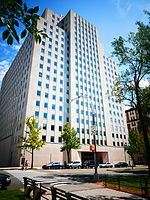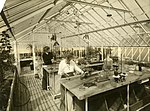United Methodist Committee on Relief
The United Methodist Committee on Relief (UMCOR) is the global humanitarian aid and development organization of the United Methodist Church (UMC). UMCOR is a nonprofit 501(c)3 organization operated under the auspices of the General Board of Global Ministries. One hundred percent of donations are directed to an earmarked project or relief effort. Administrative expenses are funded by an annual offering collected by United Methodist churches on UMCOR Sunday. UMCOR works through programs that address hunger, poverty, sustainable agriculture, international and domestic emergencies, refugee and immigrant concerns, global health issues, and transitional development. These programs are categorized into three major areas: Humanitarian Relief / Disaster Response, Sustainable Development and Global Health (in collaboration with UM Global Ministries).
Excerpt from the Wikipedia article United Methodist Committee on Relief (License: CC BY-SA 3.0, Authors).United Methodist Committee on Relief
Riverside Drive, New York Manhattan
Geographical coordinates (GPS) Address Nearby Places Show on map
Geographical coordinates (GPS)
| Latitude | Longitude |
|---|---|
| N 40.810797222222 ° | E -73.963736111111 ° |
Address
Interchurch Center
Riverside Drive 475
10115 New York, Manhattan
New York, United States
Open on Google Maps






